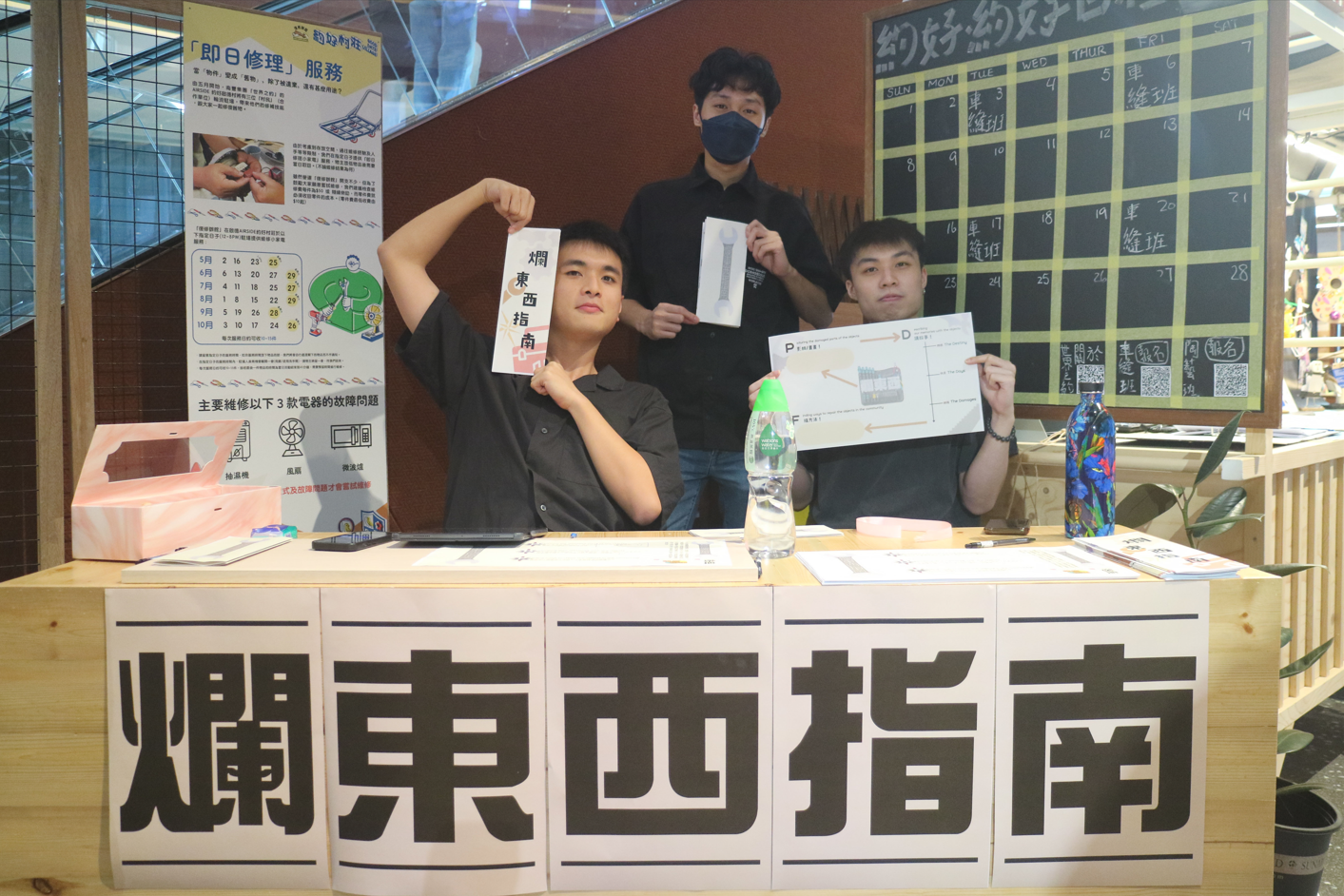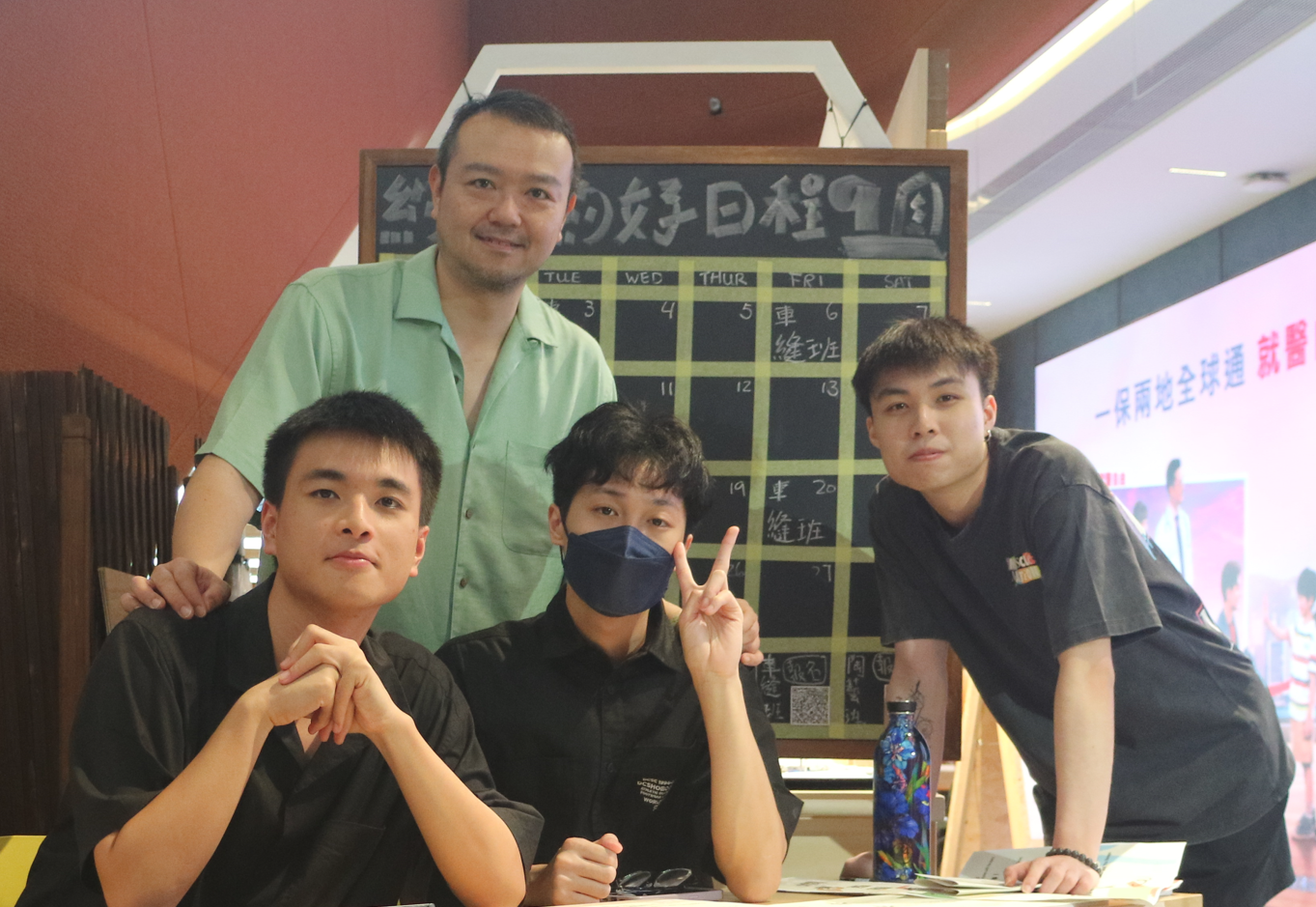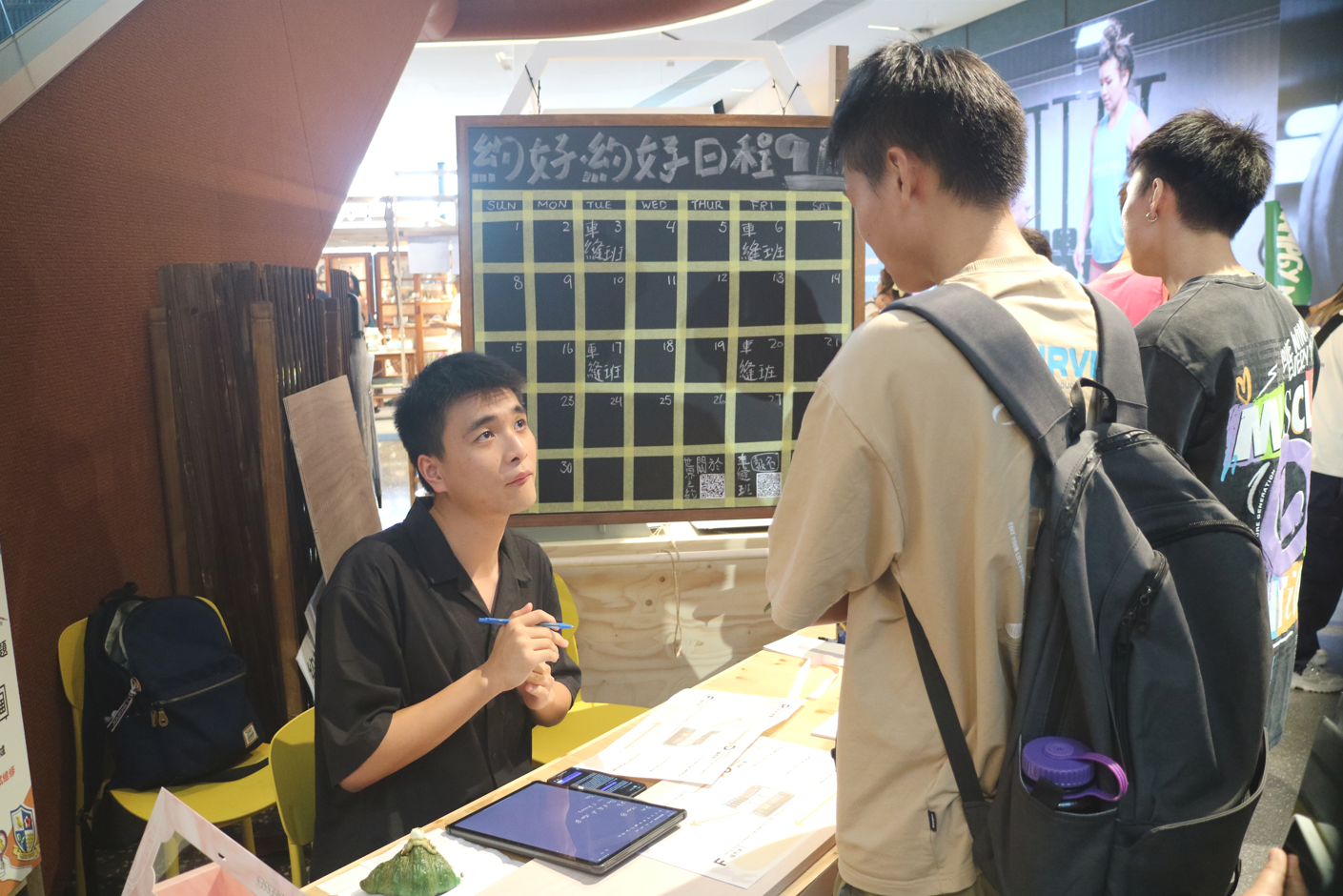

Three students from the project Repairing P.D.F: Mr. Cheung Man Hin and Mr. Lee Yiu Hei, Mr. Kwong Man Fung.
As time goes by, the accumulation of old objects in everyone’s possession tends to increase. Besides being left to gather dust or being discarded, is repair a good option? A service-learning group composed of Cheung Man Hin (NSCI/4), Lee Yiu Hei (HIST/4), and Kwong Man Fung (EESC/3) designed a guide “Repairing P.D.F” last year and collected the sentiments and stories of the general public through street interviews to encourage the repair of items and the restoration of community memories.
Q: How did the idea for the guide come about? What is the mission of it?
Our service-learning partner organisation is Lokday Culture, which hoped that we would come up with some innovative activities themed around community repair. We had initially considered holding repair classes for the homeless and providing a repair tool rental service within the community, but neither of these ideas could be implemented. We then shifted our focus to community documentation, first initiating “Repairing P.D.F”, hoping to gather different people to share the stories of their old or damaged items. However, we found it difficult to invite residents, so we changed to a recording method through interviews and designed the guide.
The mission of the guide can be represented by three English letters: PDF. P stands for Picture, which means recording the appearance of damaged items, including their broken parts, through photography or drawing; D is for Describe, which involves describing the origin and function of the item itself, as well as the reasons and time of its damage; F represents Find, which is to seek repair methods. The guide is a single sheet with two sides, the first page introducing the concept, and the second page allowing participants to draw and fill in themselves. We hope that people can reminisce and repair old objects, thereby restoring memories.


Repairing P.D.F. held activities in a mall and in a public housing estate.
Q: What activities have you participated in before? What difficulties have the team faced?
“Repairing P.D.F” was first set up at a street station in Nam Shan Estate in August last year, as part of an event co-organised by Lokday Culture and the Hong Kong Young Women’s Christian Association (YWCA). Then in September last year, thanks to the introduction of a Social Design mentor, we were able to set up a stall at the “Repair Day” in the AIRSIDE mall at Kai Tak. Additionally, as invited by Tai Kwun, the guide sheet was also included in one of their exhibitions.

Last September, Repairing P.D.F was invited to set up a counter at the “Repair Day” event at AIRSIDE.
As for difficulties, the major one was the tight schedule. Our service-learning project needed to be completed by September last year, but until July, we still focused on innovative content, and many early ideas were put on hold. Some of us wanted to provide practical services, while others wanted to build intangible community connections. It took us some time to work to the best decision and at one point, we even felt frustrated about Social Design. Fortunately, in August, we visited an exhibition about the lives of janitors and were inspired. We began to pay more attention to themes revolved around daily life and engaging with the community. Coupled with the aforementioned activities, we were able to complete the guide in time.
Q: Have you encountered any memorable stories during the community documentation process?
During the event in Nam Shan Estate, we noticed an elderly lady sitting alone on a kerb stone, so we asked her for her story. She mentioned that she had a treasured vase, which, despite having a crack, she still kept to this day because the vase was purchased with her deceased husband. Thus, she kept it to reminisce about him. Another story came from a friend who had a model toy given by a friend. Due to careless cleaning, the light on the toy was damaged, which reminded him of how his relationship with that friend was not as good as it used to be. These stories make us reflect that maintenance can not only repair the physical state of an object, but also repair intangible personal memories and even interpersonal relationships.
Q: What have you gained from this service-learning experience?
Firstly, we understood that designing and organising community activities requires persistence. For example, before the guide was created, our community documentation activities barely had any participants. But since the design of the guide, we have collected over fifty stories, reflecting the importance of not giving up easily.
Secondly, we also learned many communication skills. In the early stages of street interviews, we often directly asked interviewees if they had any damaged items at home, which made them think of discarded trash or recyclables, leading to poor results in story collection. Later, we changed our questioning approach, describing “broken things” as valuable but flawed old items to individuals, which made the collection process much smoother.
Student Reporter Leung Nga Wing